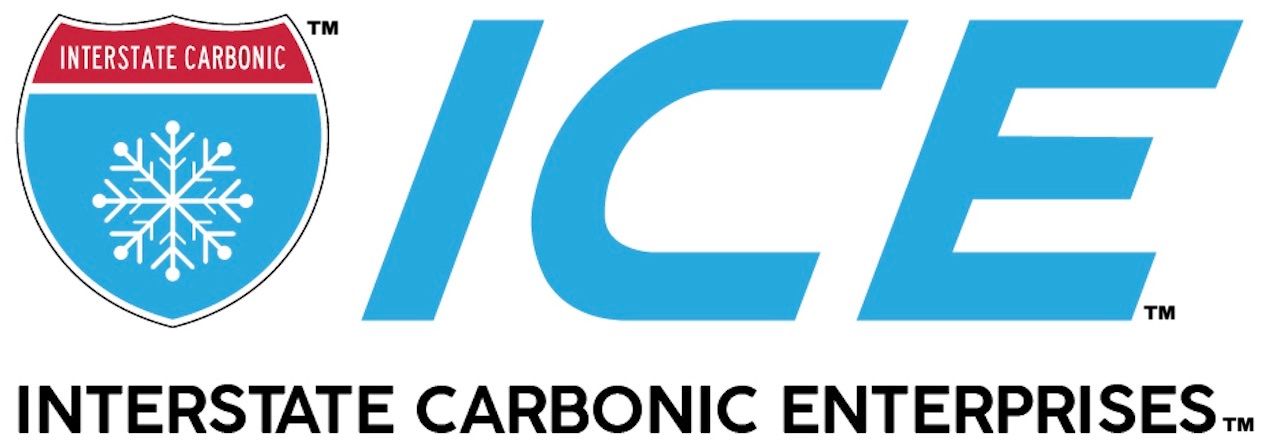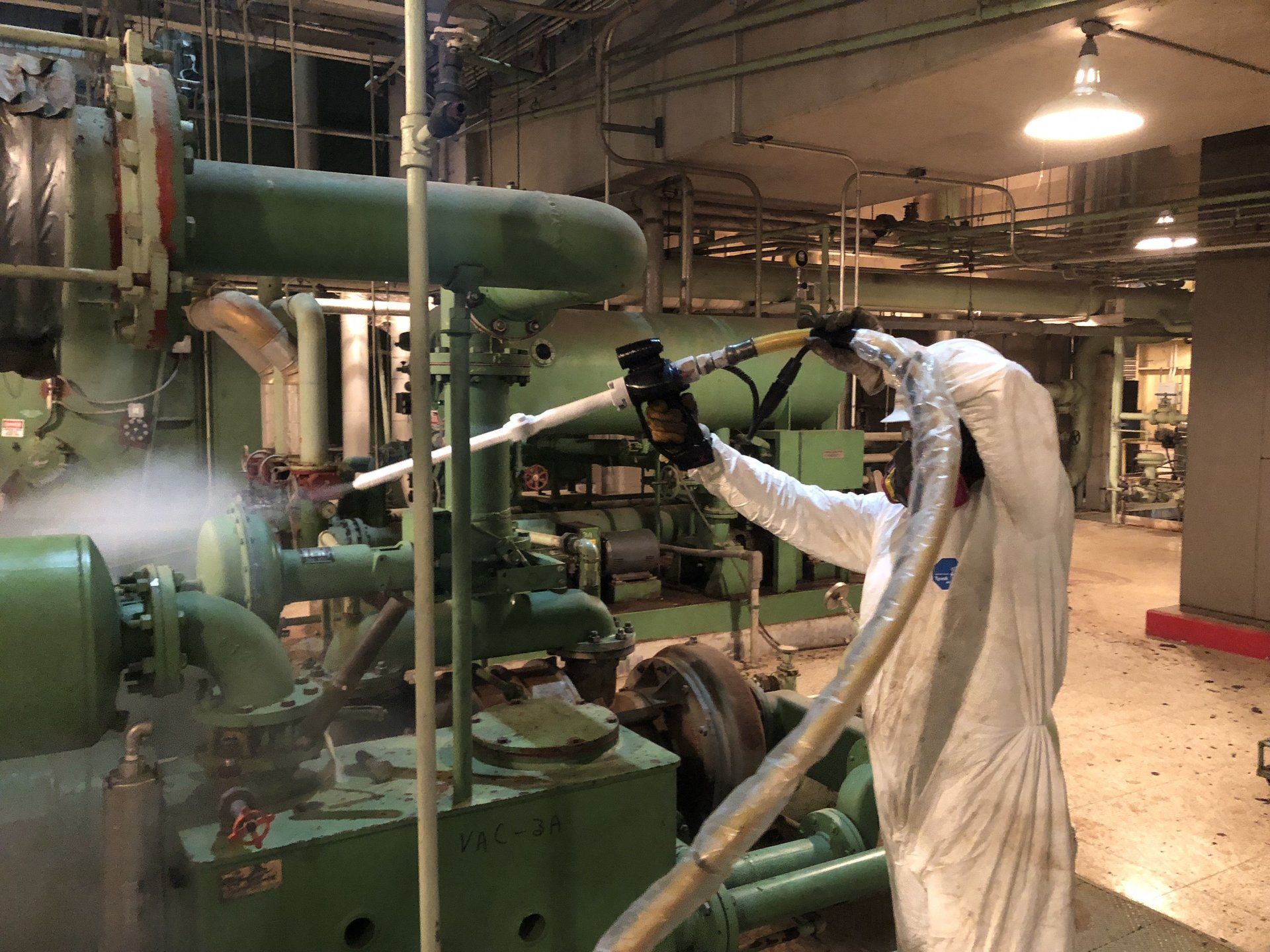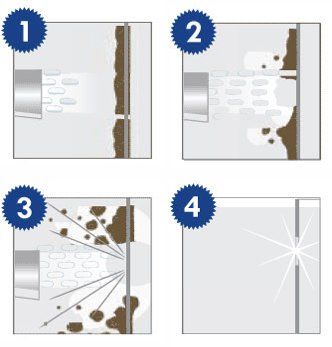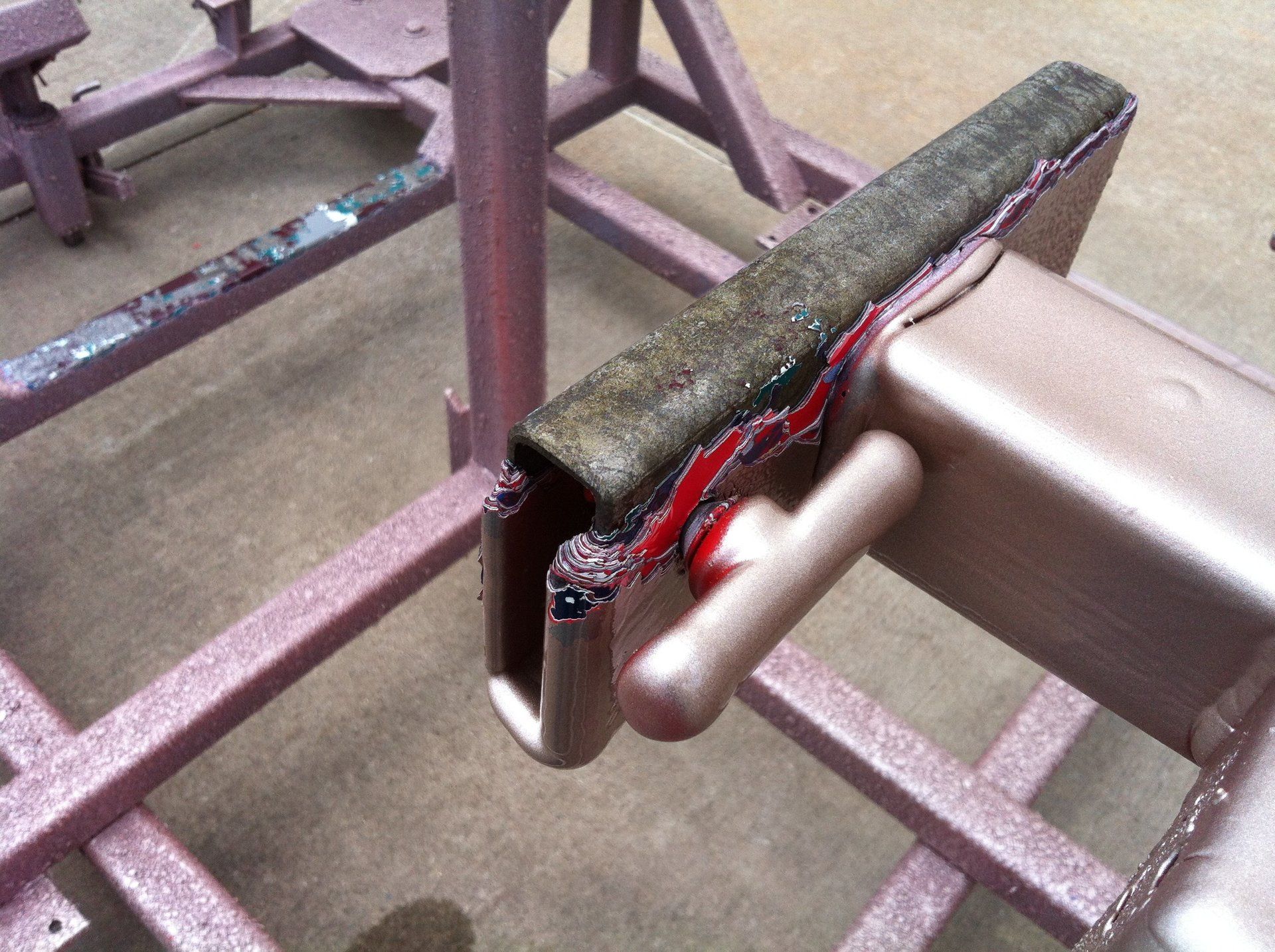HOW ICE BLASTING WORKS
REQUEST A QUOTEHow ice blasting works
How does CO2 blasting work?
What is ice blasting? If you have heard about this effective cleaning method but have questions about how it works, we have answers. CO2 blasting works because of three primary factors: pellet kinetic energy, thermal shock effect and thermal-kinetic effect. Interstate Carbonic Enterprise Cold Jet optimizes blast performance for each application by combining these forces and adjusting:
- Compressed air pressure
- Blast nozzle type (velocity distribution)
- CO2 pellet size and density
- Pellet mass rate and flux density (particles per unit area per second)
- Pellet Kinetic Energy
The Interstate Carbonic Enterprise Cold Jet process incorporates high velocity (supersonic) nozzles for surface preparation and coating removal applications. Since kinetic impact force is a product of the pellet mass and velocity over time, the Interstate Carbonic Enterprise Cold Jet delivery system achieves the greatest impact force possible from a solid CO2 pellet by propelling the pellets to the highest velocities attainable in the blasting industry.
Thermal shock effect
Instantaneous sublimation (phase change from solid to gas) of CO2 pellet upon impact absorbs maximum heat from the very thin top layer of surface coating or contaminant. Maximum heat is absorbed due to latent heat of sublimation.
Thermal-kinetic effect
The combined impact energy dissipation and extremely rapid heat transfer between the pellet and the surface cause instantaneous sublimation of the solid CO2 into gas. The gas expands to nearly 800 times the volume of the pellet in a few milliseconds in what is effectively a "Micro-explosion" at the point of impact.
The "Micro-explosion," as the pellet changes to gas, is further enhanced for lifting thermally-fractured coating particles from the substrate. This is because of the pellet's lack of rebound energy, which tends to distribute its mass along the surface during the impact. The CO2 gas expands outward along the surface and its resulting "explosion shock front" effectively provides an area of high pressure focused between the surface and the thermally fractured coating particles. This results in a very efficient lifting force to carry the particles away from the surface.
How can we help you?
Questions about how ICE can meet your dry ice blasting needs in Fort Worth?
Footer Form
We will get back to you as soon as possible
Please try again later
Contact Us
For more information on mobilization and/or scheduling:
Call or text: 469-406-1542
All Rights Reserved | Interstate Carbonic Enterprises | Website by Olive Street Design



